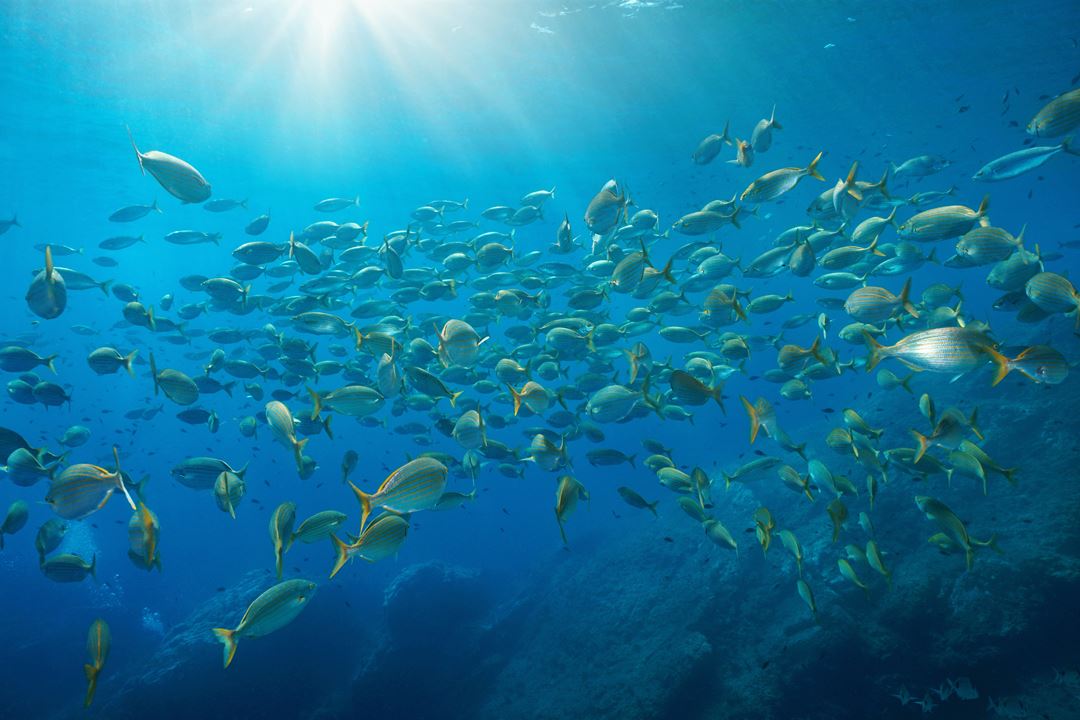The oceans are absorbing a relevant part (about 45%) of anthropogenic emissions in the atmosphere, contributing to reducing the concentration CO2. However, the dissolution of CO2 in the Ocean causes it to become more acidic, by decreasing its pH, leading to what is known as Ocean Acidification. Even if we manage to reduce emissions in line with the Paris Agreement, this acidification will still proceed for hundreds of years, exposing marine organisms that have a carbonate structure - including for example corals, echinoderms, commercial shellfish, and some algae - to conditions they have never before experienced or had to adapt to during their evolutionary history. Furthermore, since acidification is a chemical process able to alter many biochemical processes, other marine organisms can also be affected, through changes in biodiversity and trophic interactions.
The impact Ocean Acidification will have on biological, biogeochemical and ecological components of the oceans, and the consequences of this on not only the environment – but in turn also on the socio-ecological system and the human dimensions are only partially known – but could potentially be very dramatic. Direct and indirect impacts may affect many goods and services provided by marine ecosystems. Industries affected are those depending on these services from the Ocean, such as the shellfish aquaculture industry, fisheries, and tourism sector. In addition, coastline protection could be affected through a reduction of rocky substrata which constitute a natural defence, and it could also affect natural climate regulation through an alteration of the fluxes of sequestration of carbon because of the changes in the microalgae sedimentation. The list goes on – but most importantly – and affecting all of this and more – is the dramatic loss of biodiversity that could be the result.
In terms of governance, however, Ocean Acidification on its own is not a focus area, though it has not gone by unnoticed in official agreements. The UN Sustainable Development Goals (SDG) targets the reduction of ocean acidification specifically with Target number 14.3 and the climate change regime is a natural forum within which to reach an agreement or a road map for mitigating ocean acidification. The latter is especially important in that this regime already provides funding mechanisms – but concrete actions for integration into the UNFCCC are still lacking. However, through the Nationally Determined Contributions (NDCs) agreed upon with the Paris Agreement, there could be a possibility of integrating ocean acidification as an indicator at the national level for example. Ocean Acidification is also recognized in the Convention of Biological Diversity (CBD), where it is specifically recognized as a threat to accelerated biodiversity loss of marine species. From a governance perspective, though, we need to see more specific efforts that enables the global community to steer its mitigation efforts of Ocean Acidification, and better understand the nature of the risks for both industry and biodiversity in local, regional and international waters.
One of the challenges we see, however, with delinking ocean acidification from the climate question, however, is in its complexity. How do you communicate the importance of ocean acidification, when it is a topic that is so broad and distanced from the majority of stakeholders? We discuss this topic in this article: https://www.sciencedirect.com/science/article/pii/S0964569118308792?via%3Dihub

